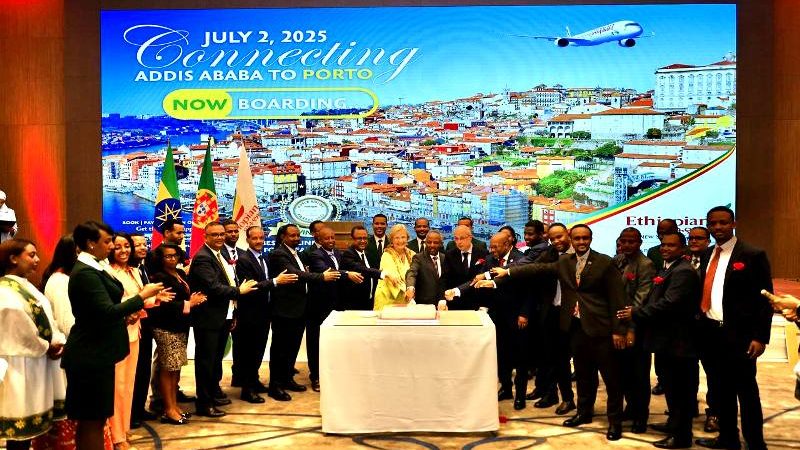How Some Airline Operators Deliberately Make Accidents Happen
An accident is defined as an unfortunate incident that HAPPENS UNNEXPECTEDLY and UNINTENTIONALLY, typically resulting in damage or injury. It is also an event that HAPPENS BY CHANCE or that is WITHOUT APPARENT OR DELIBERATE CAUSE.
ICAO Annex 13 defines aviation accident as “an occurrence associated with the operation of an aircraft, which takes place from the time any person boards the aircraft with the intention of flight until all such persons have disembarked, and in which
(a) a person is fatally or seriously injured
(b) the aircraft sustains significant damage or structural failure or
(c) the aircraft goes missing or becomes completely inaccessible”
Research has shown that some aircraft accidents that occur in the aviation industry are not UNNEXPECTED to the operator and DO NOT HAPPEN BY CHANCE.
Because of the importance of safety in aviation business and its nature, international civil aviation regulations made provisions for back-ups. For instance, aircraft have back-up engines. Airports have alternate airports. Pilots have co-pilots. The same goes for radar, and so on. These measures are there to make accident and even incident occurrences, difficult.
Apart from being capital intensive in nature, airline business is only sustainable with the right business model and more importantly, strict compliance with safety regulations, standard operating procedures, documentation processes, appropriate legal framework and manpower, baring constraints of external factors, operating environment and so on.
ERROR AT TAKE-OFF POINT
There are airline operators who understand safety precautions that can prevent accident occurrences but do not comply with them. Some others equate airline business with the other investments they have outside aviation industry and so, lack the passion for safety compliance, which is a critical requirement for safe airline operation.
Investment in airline business requires proper feasibility studies to determine model of operation, which determines choice of aircraft type, maintenance requirements, needed manpower and training requirements, and eventually, start-up budget.
A scheduled airline business investor needs to do consistent operations for a gestation period of between 10 and 15 years before expecting Return On Investment (ROI) to start trickling in gradually.
The business plan of an airline is dependent on the airline’s model of operation. Unfortunately, some airline operators are running with business plans that are copied from some other airline that has a different model. Some business plans were actually put together just to scale through the process of Airline Operators Certificate (AOC) Issuance. Such airline cannot be sustainable.
Experts say that some airline operators that record accidents ought not to be surprised about such occurrences because air accidents don’t just happen. Infact, over 75% of air accidents are traceable to human factor, making it expedient that an airline operator as a safety measure, gives adequate attention to human factors and passionately comply with safety requirements.
Other factors responsible for aviation accidents are organizational factors, environmental factors, political factors, technological factors, social factors, legal pronouncements and so on.
Commencing an airline business, without a proper feasibility study, with wrong business model or choice of aircraft, amounts to deliberately working towards recording an aircraft accident.
DELIBERATE SAFETY RULE VIOLATIONS
Many aircraft accidents that occur in scheduled passenger operations don’t just happen. They are made to happen by the operator, whose poor attitude to safety is powered by a lack of passion for it. Day after day, many airline operators violate safety rules and thereafter, fake expressions of surprise when accidents eventually occur. The things they do to produce accidents are as follows:
1. They fail to take advantage of modern aircraft technology called Continuous Airworthiness Monitoring Software (CAMS), which helps to easily detect faults in an aircraft and quickly fix them to avoid safety problems
2. Some airlines do not have incident capturing system and their Organizational Risk Log book (if they have one), is either empty or undermined
3. Aircraft are acquired for scheduled passenger operations without regards for the Aircraft Status Report and looking at safety and maintenance cost considerations that would be involved.
4. Selective or non adherence to relevant Airworthiness Directives (ADs) and Service Bulletin Directives (SBDs).
5. Some operate aircraft without complying with schedule maintenance requirements
6. Poor or zero staff welfare and stress. A pilot who does close to 20 landings in one day is an accident waiting to happen. This is usually due to employer pressure. Non-payment or delay of airline staff salaries is also a major threat to safety.
Many airline owners abuse training bond deals and have in fact, become modern slave masters. Why won’t an accident happen when an airline crew members are unhappy with management?
7. Many airline operators give priority to immediate commercial gains above safety of human lives. (This could result from poor understanding of the business, lack of passion or concern for safety or sheer wickedness)
8. Acquiring or leasing of aircraft without bordering about the aircraft’s unsafe status report
9. Refusal to comply with professional advice
10. Some operators mount pressure on the civil aviation authority to grant waivers and extensions on aircraft maintenance and make other safety related compromise requests from the regulatory body
11. Many operate airlines with a reactive Safety Management System (SMS) model rather than a proactive model due to the absence of a reliable contingency plan in the overall business plan
12. Some operators do not comply with their operations specifications as defined by their AOC
13. Disregard for Flight Operations Quality Assurance *(FOQA) Programme
14. The use of a different airline’s Master Minimum Equipment List (MMEL) from the aircraft manufacturer, without customizing it into Minimum Equipment List (MEL).
15. Some airlines have organograms with some blank spaces meant for certain safety management personnel. This is a red flag because where no safety officer is officially assigned to a particular vital safety responsibility, safety is threatened.
16. Premature or poorly conceived switch of business model or diversification. A Nigerian registered airline was doing very well on hajj operations. It ran into multiple problems after it embarked on scheduled regional and international scheduled passenger operations.
Another Nigerian airline was very focused for decades, operating charter flights. Problem started when it embarked on scheduled passenger operations. Apart from environmental constraints, poor feasibility studies and SWOT (Strengths, Weaknesses, Opportunities and Threats) Analysis before attempting diversification, were apparent.
17. When an airline has a fleet of over five aircraft for scheduled passenger operations, there has to be a Safety Manager, as distinct from a Quality Assurance Manager. Otherwise, quality may be compromised and this opens door to safety issues. Failure to comply with quality standards implies lack of safety in an airline.
CONCLUSION
It is not every aircrsft accident that is a surprise to the aircraft owner or operator. Unfortunately, some airline operators are merely working day and night to achieve accident.
Conducting a daily SWOT Analysis on airline business is supposed to be a habit for an airline operator and its management personnel. However, ignorance, irresponsibility and sheer “I don’t care attitude” has left many airlines with the status of a time bomb, waiting to waste lives.
Any airline operator, who is not passionate about safety and does not have a culture of conducting a daily SWOT Analysis should simply leave airline business and go invest in some other businesses so there can be sanity, a better industry performance and safety guarantee for the air transport sector.
WRITTEN BY ALBINUS CHIEDU







